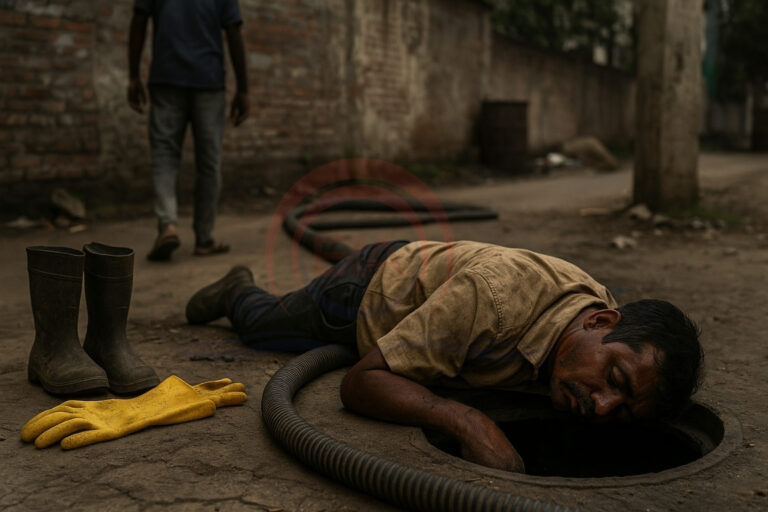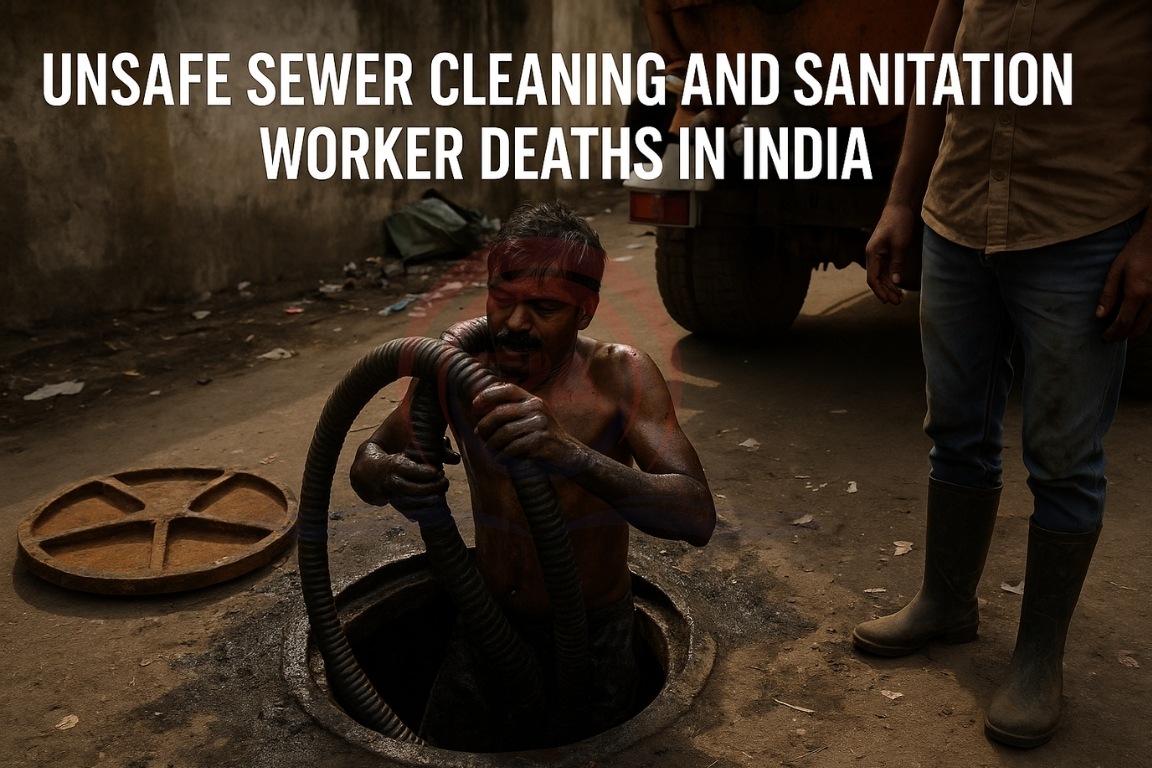A recent social audit commissioned by the Ministry of Social Justice revealed that over 90% of sanitation workers who died while cleaning sewers in 2022 and 2023 lacked any safety gear. The findings were shared in Parliament, raising serious concerns about worker safety and the failure to enforce protective measures.
Background of the Issue
- Manual cleaning of sewers and septic tanks remains a hazardous job, despite laws prohibiting unsafe practices.
- In 2022 and 2023, around 150 sanitation workers reportedly died while cleaning sewers and septic tanks across India.
Lack of Safety Equipment
- Out of 54 deaths studied, 49 workers had no safety gear at all.
- Only five workers wore gloves; just one had both gloves and gumboots.
- In 47 cases, no mechanical tools or PPE kits were provided for cleaning operations.
Equipment and Training Deficiency
- Equipment for safe cleaning was found in only two cases.
- Proper training on handling hazardous cleaning was provided in just one case.

Absence of Informed Consent
- In 27 cases, workers were made to clean without giving any consent.
- In 18 cases where consent was taken, workers were not informed of the risks involved.
Hiring Patterns
- 38 workers were hired individually or through informal means.
- Only five were directly employed by government bodies.
- In three cases, workers were under government contracts but working for private firms.
Awareness and Institutional Readiness
- Post-death awareness drives were done in only 7 cases.
- Agencies responsible for cleaning lacked equipment and preparedness in 45 of the 54 cases.
NAMASTE SCHEME
- Launched in July 2023 to ensure the safety and welfare of sewer and septic tank workers.
- So far, over 84,000 workers identified under the scheme.
- About half have been given safety kits and PPE.
Conclusion:
The audit exposes severe negligence in ensuring the safety of sanitation workers. Despite legal bans, manual and hazardous cleaning practices continue without protection, highlighting the urgent need for better enforcement and systemic reforms.





